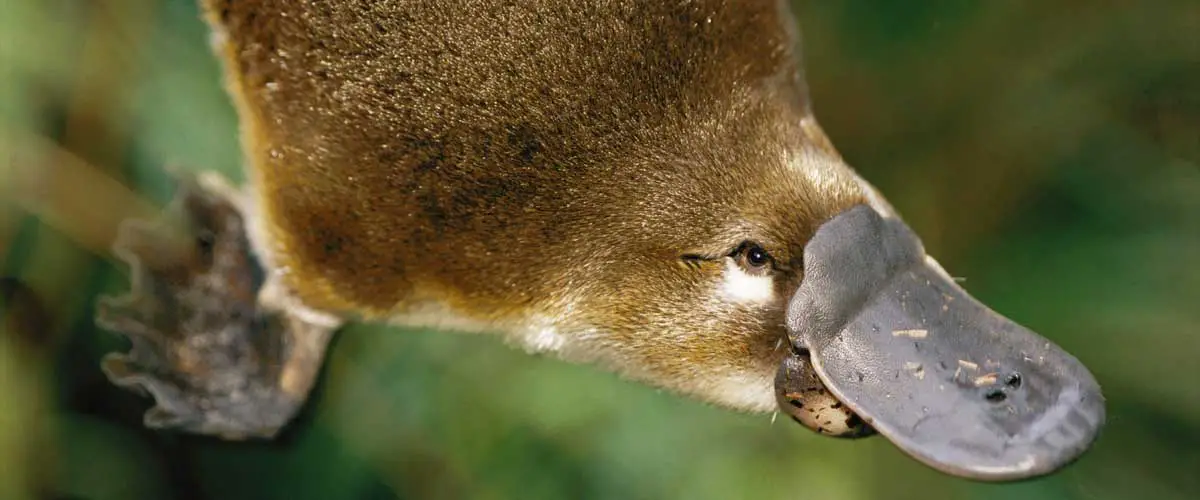
The dugong is a large marine mammal which, together with the manatees, is one of four living species of the order Sirenia. The world’s most significant population – 10,000 to 12,000 animals, or 10% of the species – lives in Shark Bay, WA. Moreton Bay off the coast of Brisbane, Qld, is another major home of the dugong because it also contains clean, clear water at the appropriate depth ranges; suitable food; and access to the sea for warmth.
- More
- More
- More
- More
- More
- More
- More
- More
- More
- More
- More
- More
- More

Kangaroos are the most prolific of Australia’s marsupials and can be found almost anywhere around the country. Get up close in their natural habitat, however, is another thing. At Pebbly Beach near Batemans Bay, NSW, the local kangaroos not only graze on the grass above the beach and around the cabins, they often jump into the surf and splash around. At Cape Hillsborough, Qld, eastern greys can often be found around the picnic areas and on the beach during the afternoon and evening, feeding on the washed up seaweed. A similar things occurs with western grey kangaroos on the other side of the continent at Lucky Bay, Cape Le Grand National Park, near Esperance, WA.

The Australian Fur Seal has a relatively restricted distribution around the islands of Bass Strait, parts of Tasmania and southern Victoria. They can be seen hauling out (coming ashore) on islands off South Australia and areas of southern New South Wales such as Montague Island with the occasional animal appearing as far north as the mid north coast of New South Wales.

The whale shark is a slow-moving filter feeding shark, and the largest living fish species. Whale sharks can seen at close range by divers in many places in tropical waters around the world. In Australia, the only place where a diver can swim with whale sharks in Ningaloo Reef near Coral Bay, on the north west coast of Western Australia. Every year, between late March and early July, these gentle giants congregate in the Ningaloo Marine Park following the mass spawning of coral.

Point Labatt, on South Australia’s Eyre Peninsula, is the best place to view Australian sea lions. These fascinating animals – Australia’s only permanent mainland colony – can be seen in their natural habitat from a clifftop viewing platform. The reefs around the foot of the cliffs here provide a resting place for the sea-lions, which have often spent several weeks at sea catching fish before returning here to rest and play.

The green turtle is a large and attractive marine turtle that spends almost its entire life at sea. However, during the summer months, the females come ashore to nest on some mainland beaches and many offshore islands of northern Australia. In Australia, there are four major green turtle nesting areas.

The Quokka, one of the smallest wallabies, is always associated with Rottnest Island, of the coast of Perth, WA, for it is here they have found a safe haven to live and breed. Quokkas have free access to the whole of the island and it is rare to visit Rottnest, even on a day trip, without seeing one. Quokkas are also known to come into the settlement areas at dusk seeking food and don’t seem to mind posing for a quokka selfie.

After being hunted almost to extinction, whales are common in Australian waters once agaIn. From late July to early November, Whales can be seen as they migrate from cool southern waters around Antarctica to more temperate, sub-tropical waters to give birth. There are many points on land from which to view whales as they pass up and down the coast, the the best views are had by taking a whale watching cruise.

An hour’s drive from Darwin you can take a cruise on the Adelaide River and see giant crocodiles being fed at close range in their natural habitat. What’s even more amazing is that this attraction is natural; it takes nothing from the crocodile’s habitat and changes nothing in the way it lives naturally in the wild. A short interaction of just a few minutes a day ensures that the crocodiles lose none of their natural survival and hunting instincts.

The Platypus is semi-aquatic, inhabiting small streams and rivers over an extensive range from the cold highlands of Tasmania and the Australian Alps to the tropical rainforests of coastal Queensland as far north as the base of the Cape York Peninsula. There are a number of viewing platforms for the observation of Platypuses in their natural habitat at a number of locations around the country.

Of all the animals that are unique to Australia, the koala and the kangaroo are at the top of the list of “must see” animals among overseas visitors. The koala can be found throughout the coastal regions of eastern and southern Australia, from near Adelaide to the southern part of Cape York Peninsula. However, as they are nocturnal and live in the high branches of tall trees, they are very difficult to spot by the untrained eye of passers by. Most zoos and wildlife sanctuaries have koalas, often they can be held for photographs.

Wombats are Australian marsupials found in forested, mountainous and heathland areas of south-eastern Australia and Tasmania. Wombats are stocky, robust animals, with a lot of power for digging. The body is close to one meter long with short, powerful legs. Most wildlife park and sanctuaries parks, zoos and other tourist set-ups across Australia have wombats on public display, and they are quite popular

Wombats are Australian marsupials found in forested, mountainous and heathland areas of south-eastern Australia and Tasmania. Wombats are stocky, robust animals, with a lot of power for digging. The body is close to one meter long with short, powerful legs. Most wildlife park and sanctuaries parks, zoos and other tourist set-ups across Australia have wombats on public display, and they are quite popular.

The Tasmanian Devil is a carnivorous marsupial now found in the wild only in the Australian island state of Tasmania. The devil was one of six native Australian animals to appear on commemorative Australian two dollar coins issued between 1989 and 1994. Tasmanian devils are popular with domestic and international tourists. Because of their unique personality the Tasmanian devil has been the subject of numerous documentaries and non-fiction children’s books.









